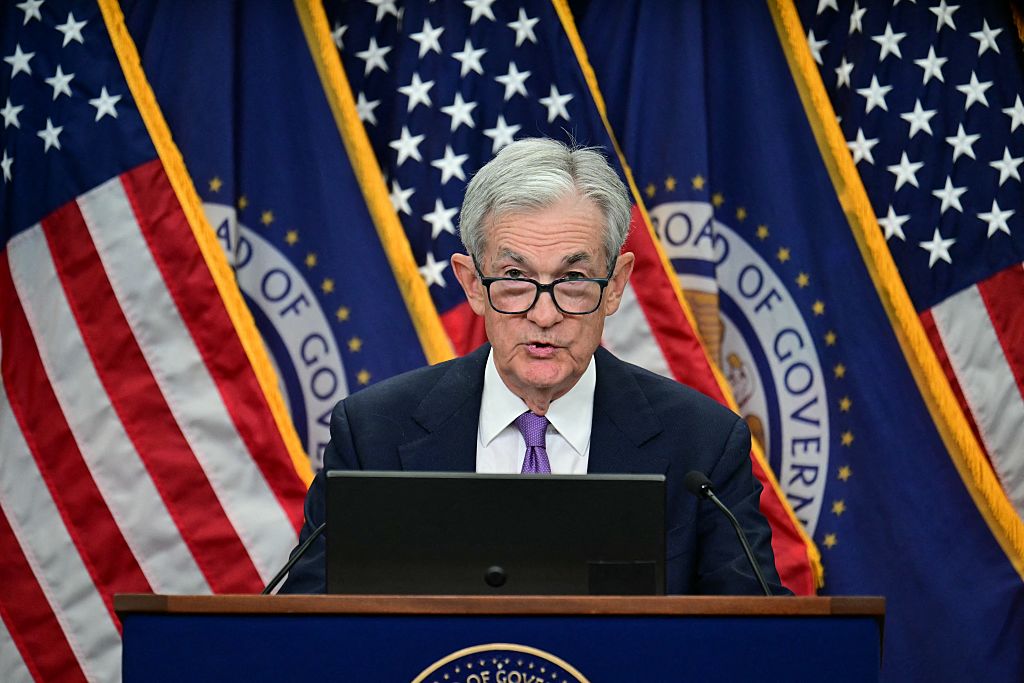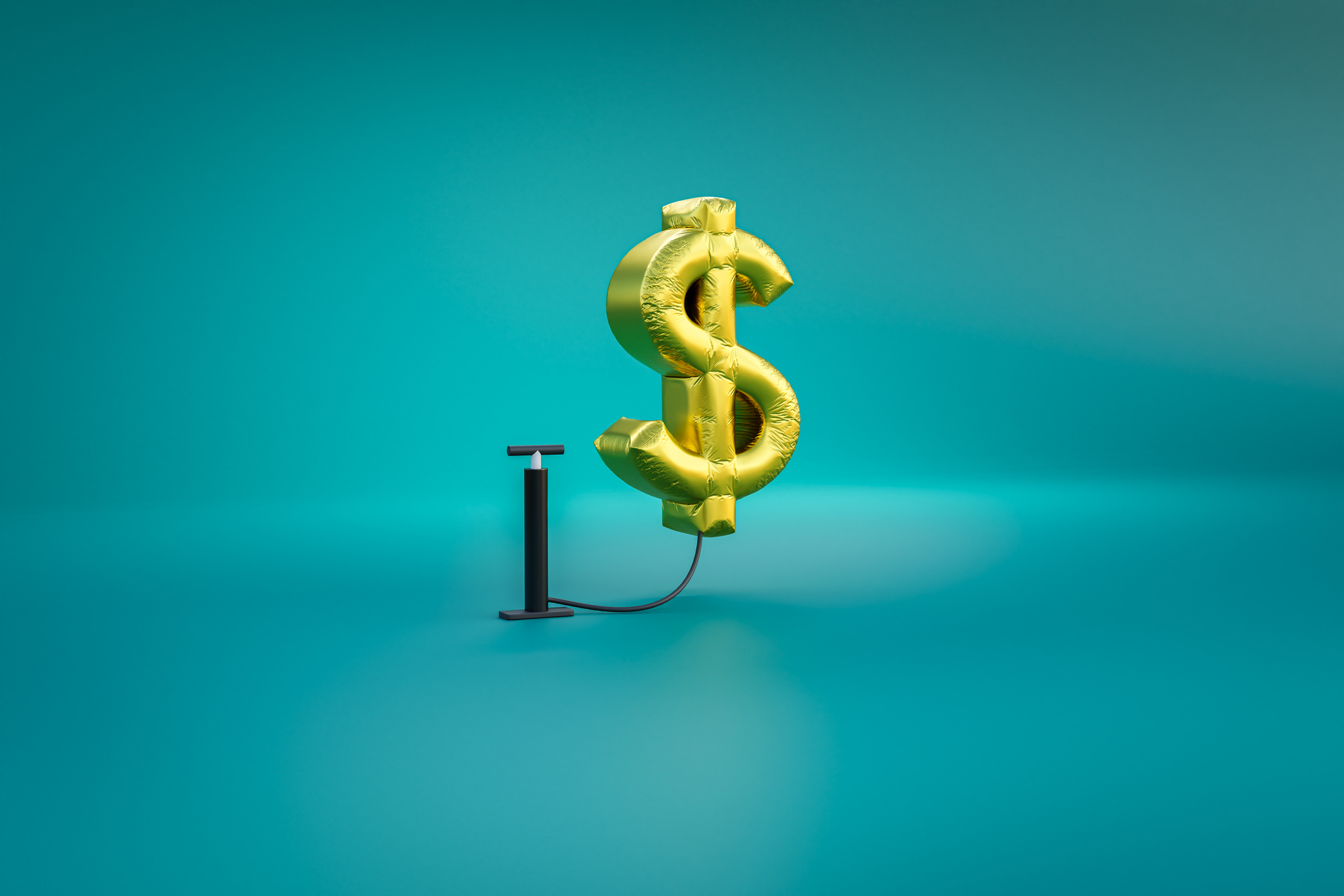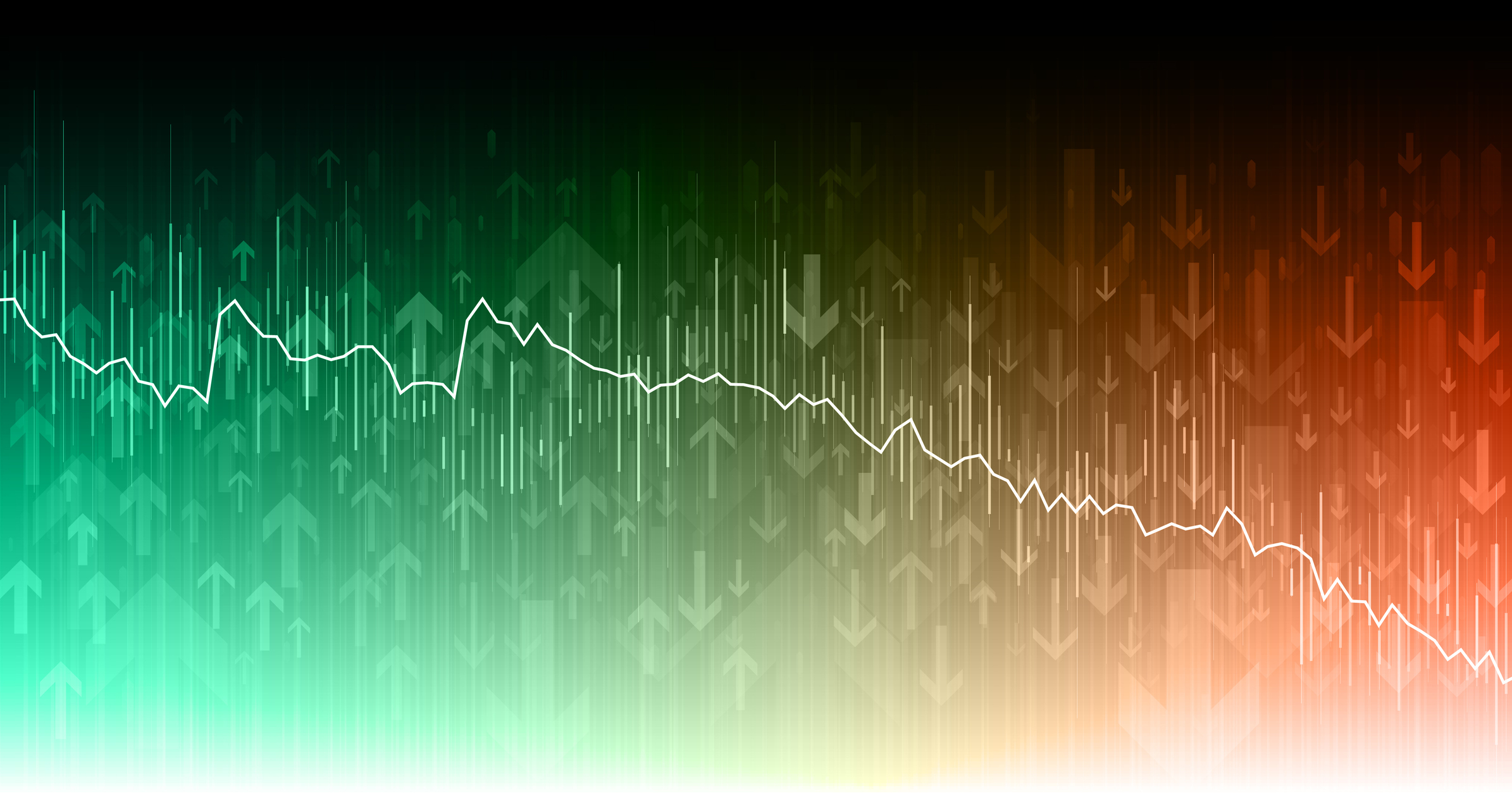7 Great 'America First' Stocks to Own Under Trump
Since President Donald Trump’s surprise victory in November, Wall Street has been scrambling to identify businesses that have the most to gain under the new administration.


Since President Donald Trump’s surprise victory in November, Wall Street has been scrambling to identify businesses that have the most to gain under the new administration. The stock market’s broad advance to record highs suggested that investors saw winners almost everywhere they looked. But as Trump’s “America First” themes translate into actual policies, it should become clearer which companies could be the biggest beneficiaries.
We went hunting for potential America First stocks, using several criteria. To start, we wanted companies that derive the vast majority of their sales domestically and stand to do well if Trump makes good on his promise to sharply boost U.S. economic growth.
Then we looked for businesses that would benefit from specific Trump themes—for example, ramping up job creation and stoking wage growth, which could spur consumer spending; increasing outlays for infrastructure projects; and promoting U.S. exports. Other considerations included Trump’s pledge to cut corporate tax rates and his vow to eliminate what he considers excessive business regulation.
We came up with seven companies that we think qualify as great America First investment ideas. Three major caveats: First, there’s no guarantee that Trump’s policies will emerge as promised. Second, even if they do, there’s no assurance that they will work as touted—unintended consequences could turn some likely business winners into stunned losers. Third, record- high stock prices may already reflect much of any bump in the profitability of America First companies.
That said, here are our seven picks.
Data is as of February 28, 2017, unless otherwise indicated. Click on symbol links in each slide for current share prices and more.
Revenue values based on the past 12 months. Price-earnings ratio based on estimated earnings for the next four quarters. Sources: Yahoo, Zacks Investment Research. Stocks are ranked by percentage of domestic revenues, highest to lowest.

Martin Marietta Materials
- Symbol: MLM
- Share price: $215.95
- Market value: $13.6 billion
- Revenue: $3.8 billion
- % of revenue from U.S.: 99%
- Price-earnings ratio: 26
- Dividend yield: 0.8%
This could be the ultimate Trump stock. The company is the second-largest U.S. producer of “aggregates”—the cement, asphalt, sand and other raw materials used in construction. Nearly all of Martin Marietta’s 2016 sales of $3.6 billion were made in the U.S. The firm has been riding high for the past four years as demand from infrastructure projects has surged. Earnings per share reached $6.63 in 2016, up from $1.83 in 2012. The stock has doubled since February 2016.
The question now is whether growth can remain stellar far enough into the future to justify a higher share price. The controversial U.S.–Mexico border wall would be one source of demand. But bulls are also betting that Trump is serious about funding a huge new program to fix roads, bridges, airports and other infrastructure. That could mean a long growth streak for Martin Marietta. One project already under way: Congress in 2015 funded a jump in highway construction through 2020. If Trump and Congress agree on much more of the same, Martin Marietta should win big. The company last year raised its dividend for the first time since 2008 and pledged a “return to consistent dividend growth.”

Cintas
- Symbol: CTAS
- Share price: $118.01
- Market value: $12.4 billion
- Revenue: $5.1 billion
- % of revenue from U.S.: 90%
- Price-earnings ratio: 26
- Dividend yield: 0.9%
Should the job market get the kind of boost Trump has promised, Cintas could be a major beneficiary.
It’s the largest provider of uniforms for businesses, with 25% of the U.S. market in industries such as hotels, casinos, food-service firms and manufacturers. Cintas’s market share will grow to 31% when it completes a $2.2 billion deal to buy rival G&K Services (GK) this year. About 90% of Cintas’s business is domestic. Even in the sluggish economy of the past seven years, the firm shone. Analysts expect sales in the fiscal year that ends this May to reach $5.2 billion (excluding G&K’s revenues), up from $3.5 billion in fiscal 2010. They see earnings of $4.60 per share in the current year, compared with $1.40 in 2010.
Besides its main business of renting (and cleaning) uniforms, Cintas has added other fee-producing services, such as providing first-aid supplies to clients on its routes. Brokerage Robert W. Baird says the purchase of G&K will give Cintas “unprecedented scale” as well as cost-saving opportunities, and Baird expects annual percentage earnings growth in the “high teens” through 2020. Cintas also boasts a strong balance sheet and has raised its dividend for 33 straight years. It did so even during the 2007–09 recession, despite a temporary profit slump.

Home Depot
- Symbol: HD
- Share price: $144.91
- Market value: $176.5 billion
- Revenue: $94.6 billion
- % of revenue from U.S.: 90%
- Price-earnings ratio: 20
- Dividend yield: 2.5%
The retailer’s earnings and stock price have had phenomenal runs as the U.S. housing market has recovered from its 2006–12 plunge. And the nation’s largest home-improvement retailer remains in great shape to benefit if Trump’s policies boost domestic job growth and wages, providing Americans with more to spend on their abodes.
About 90% of the firm’s $95 billion in annual sales are made in the U.S., with the rest in Canada and Mexico. To its credit, Home Depot’s leadership ended a foray into China in 2012, after Chinese consumers rejected the do-it-yourself improvement concept.
Since then, Home Depot has focused heavily on improving efficiency in its U.S. operations, helping to drive profits to record levels. The company earned $6.45 per share in the fiscal year that ended January 31, up 18% from the previous year. Wall Street expects profits to rise by 12% in the year that ends next January. Even if higher mortgage rates slow home construction somewhat, Home Depot derives 65% of sales from home-maintenance spending, compared with 35% from new building, according to research firm Morningstar. Also, aging housing stock coupled with aging baby boomers should provide a “solid demographic driver” of home-improvement sales long term, CFRA Research says.

Bank of America
- Symbol: BAC
- Share price: $24.60
- Market value: $246.7 billion
- Revenue: $91.5 billion
- % of revenue from U.S.: 88%
- Price-earnings ratio: 14
- Dividend yield: 1.2%
BofA may actually be the closest thing to “America’s bank.” With $2.2 trillion in assets, it is second only to JPMorgan Chase (JPM) in size. But unlike its biggest rivals, BofA is mostly a homebody: 88% of its revenue comes from U.S. operations, including credit cards, small-business loans and its Merrill Lynch brokerage subsidiary.
BofA nearly collapsed during the 2008–09 financial crisis, but it was saved by the government’s massive bank-bailout program (the company has repaid Uncle Sam). BofA remade itself by jettisoning bad mortgages, slashing costs and refocusing on its basic businesses. Customers stuck with it: BofA’s deposits have surged to $1.26 trillion, from $805 billion in 2007.
Now earnings are rebounding at a healthy pace. Profits rose by 14% in 2016, and analysts on average expect a 16% gain in 2017. Key to the outlook is the assumption that the Federal Reserve will continue to slowly raise short-term interest rates, allowing BofA (and other banks) to boost earnings by hiking the rates it charges for loans faster than the rates it pays on deposits. Given its dependence on the U.S. economy, the bank could also gain from any Trump policies that speed growth and lessen financial regulation. Brokerage Keefe, Bruyette & Woods says that overall, BofA has “the best earnings trajectory of its peers.”

Hershey
- Symbol: HSY
- Share price: $108.03
- Market value: $16.5 billion
- Revenue: $7.4 billion
- % of revenue from U.S.: 83%
- Price-earnings ratio: 23
- Dividend yield: 2.3%
If Trump’s centerpiece idea is to strengthen U.S. manufacturing, Hershey could be the litmus test.
The company’s chocolate is as American as a brand can be, holding 46% of the U.S. market. And Hershey still does a huge portion of its production in its namesake Pennsylvania town, where Milton Hershey set up shop in the early 1900s. In 2016, the firm racked up $7.4 billion in sales, 88% in the U.S. and Canada. Its brands extend well beyond chocolate, including Bubble Yum, Good & Plenty, Jolly Rancher and Twizzlers.
Food rival Mondelez International (MDLZ) highlighted the value of Hershey’s pantry last summer by offering to buy the company for $107 per share, or $23 billion. The bid was rejected by the philanthropy that Milton Hershey set up to hold 80% of the voting power of the company’s stock. Hershey could argue that it does very well alone: The company gets high marks for generating strong shareholder returns over the past 10 years. And new CEO Michelle Buck took over on March 1 with a promise to cut at least $100 million in costs in each of the next three years to further bolster profits. The cuts could also free up cash for new-product development and growth overseas. Any Trump lift to the economy could be extra sauce on the sundae for Hershey.

Masco Corp.
- Symbol: MAS
- Share price: $33.78
- Market value: $10.8 billion
- Revenue: $7.4 billion
- % of revenue from U.S.: 79%
- Price-earnings ratio: 18
- Dividend yield: 1.2%
Like Home Depot, Masco is a bet that Trump will find a way to get more money into the pockets of American consumers. Masco is a major producer of home-improvement and building products, so it should benefit from policies that underpin economic growth and lift incomes. Masco’s Behr house-paint line is the number-one brand for do-it-yourselfers, with 28% of the market. The company is also a leader in plumbing products, under the Delta, Peerless, Hansgrohe and other brand names; cabinetry (KraftMaid, Merillat); and windows (Milgard). About 80% of sales are domestic.
A big part of Masco’s appeal lies in a corporate overhaul undertaken in 2014, says Morningstar. New leadership has built a “stronger and more consistent” business by cutting costs, focusing on the company’s most profitable lines and expanding sales of Behr paint to professional painters, Morningstar says. Excluding one-time items, profits surged by 27% in 2016, to $1.51 per share, as sales rose 3%, to $7.4 billion. Analysts expect earnings to rise 23% in 2017 and 12% in 2018, further strengthening the firm’s already-solid balance sheet.

Raytheon
- Symbol: RTN
- Share price: $154.15
- Market value: $45.2 billion
- Revenue: $24.1 billion
- % of revenue from U.S.: 69%
- Price-earnings ratio: 21
- Dividend yield: 1.9%
Trump’s America First plan has two pieces that are bullish for defense contractor Raytheon: a pledge to pump up U.S. military outlays and a promise to boost U.S. exports. Raytheon faced four years of slowly declining revenue from 2011 through 2014 amid Pentagon cutbacks. But a turnaround began in 2015, and Trump and Congress are expected to feed the recovery by increasing defense spending, including for such Raytheon specialties as missiles, electronics, radar and cybersecurity. With foreign business accounting for 30% of its sales, Raytheon isn’t as pure of an America First play as the other companies on this list. But brokerage RBC Capital says that the company should benefit from continued “intense demand” from foreign governments for its missiles and anti-missile systems.
In 2016, Raytheon’s earnings rose 10.2%, to $7.44 per share, as sales edged up 3.5%, to $24.1 billion. Analysts expect flat earnings in 2017, but they see profits rising to a record $8.30 per share in 2018, thanks in part to Raytheon’s order backlog of nearly $37 billion. What’s more, RBC notes, Raytheon has a long history of rewarding shareholders with dividend increases and stock buybacks, which should continue thanks to the company’s healthy finances.
Profit and prosper with the best of Kiplinger's advice on investing, taxes, retirement, personal finance and much more. Delivered daily. Enter your email in the box and click Sign Me Up.

-
 Are You Afraid of an IRS Audit? 8 Ways to Beat Tax Audit Anxiety
Are You Afraid of an IRS Audit? 8 Ways to Beat Tax Audit AnxietyTax Season Tax audit anxiety is like a wild beast. Here’s how you can help tame it.
-
 The Kiplinger Letter's 10 Forecasts for 2026
The Kiplinger Letter's 10 Forecasts for 2026The Kiplinger Letter Here are some of the biggest events and trends in economics, politics and tech that will shape the new year.
-
 We're retired and mortgage-free, but he wants to downsize.
We're retired and mortgage-free, but he wants to downsize.We've paid off our mortgage, have $970K in savings and $5K each month from Social Security. Kiplinger asked wealth planners for advice.
-
 The Kiplinger Letter's 10 Forecasts for 2026
The Kiplinger Letter's 10 Forecasts for 2026The Kiplinger Letter Here are some of the biggest events and trends in economics, politics and tech that will shape the new year.
-
 Special Report: The Future of American Politics
Special Report: The Future of American PoliticsThe Kiplinger Letter The Political Trends and Challenges that Will Define the Next Decade
-
 The November CPI Report Is Out. Here's What It Means for Rising Prices
The November CPI Report Is Out. Here's What It Means for Rising PricesThe November CPI report came in lighter than expected, but the delayed data give an incomplete picture of inflation, say economists.
-
 December Fed Meeting: Updates and Commentary
December Fed Meeting: Updates and CommentaryThe December Fed meeting is one of the last key economic events of 2025, with Wall Street closely watching what Chair Powell & Co. will do about interest rates.
-
 October Fed Meeting: Updates and Commentary
October Fed Meeting: Updates and CommentaryThe October Fed meeting is a key economic event, with Wall Street turned into what Fed Chair Powell & Co. did about interest rates.
-
 The Delayed September CPI Report is Out. Here's What it Signals for the Fed.
The Delayed September CPI Report is Out. Here's What it Signals for the Fed.The September CPI report showed that inflation remains tame – and all but confirms another rate cut from the Fed.
-
 Trade Uncertainty Sparks Whipsaw Session: Stock Market Today
Trade Uncertainty Sparks Whipsaw Session: Stock Market TodayVolatility is making a cameo here in mid-October, a generally positive month marked by its historic stock market events.
-
 If You'd Put $1,000 Into Bank of America Stock 20 Years Ago, Here's What You'd Have Today
If You'd Put $1,000 Into Bank of America Stock 20 Years Ago, Here's What You'd Have TodayBank of America stock has been a massive buy-and-hold bust.
